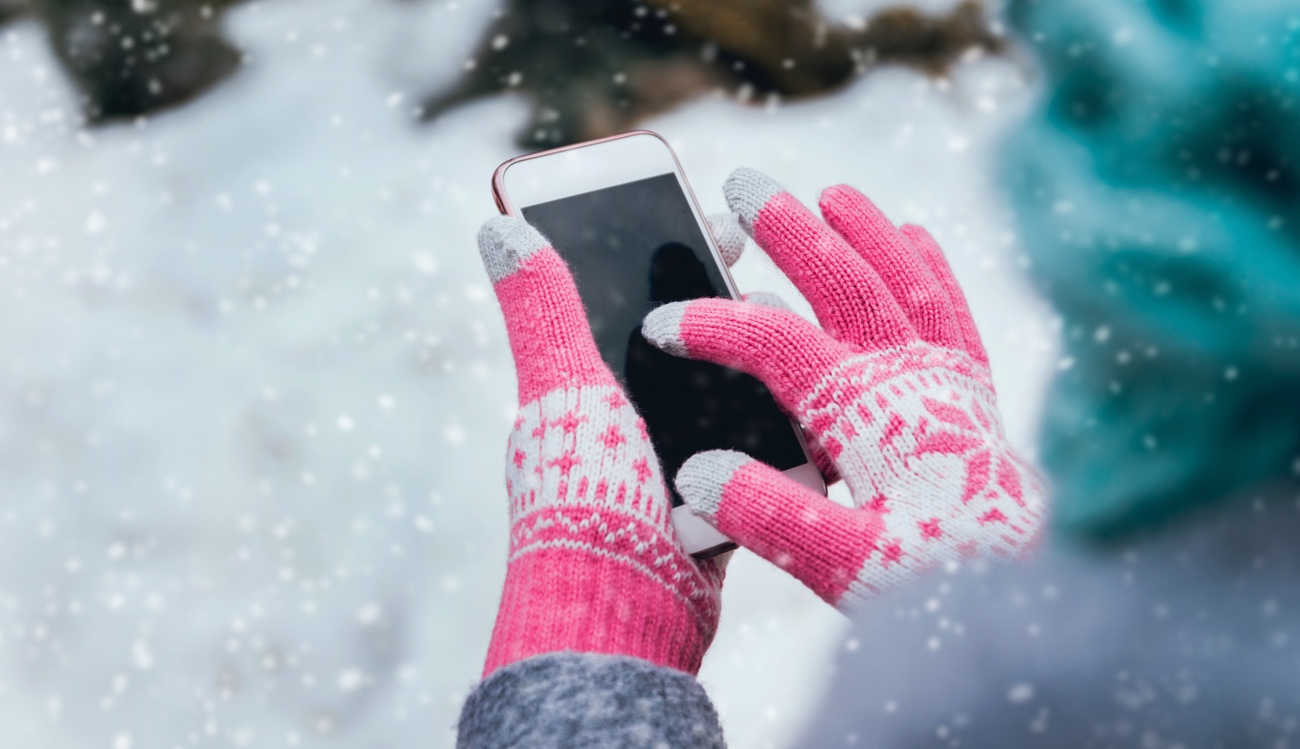Why Does Cold Weather Drain Your Phone Battery?

Chicago in the wintertime is an unforgiving place. Want to move around town? Don't own a car? Prepare to stand on a raised train platform for 10 minutes, and try to expose as little of your skin as possible to the raw, blasting wind. Is the temperature below zero again? Here's a weak outdoor heat lamp on the platform; be grateful for it.
I found myself on one of those platforms, shivering under one of those lamps, last Saturday (Dec. 30) as the temperature dipped to 3 degrees Fahrenheit (minus 16 degrees Celsius). I'd just come from lunch, during which I'd hijacked one of the restaurant's outlets to charge my phone up to 100 percent of its battery capacity; my next destination was downtown, in an area with which I was unfamiliar, and I was making sure to have my GPS at hand for guidance. And yet, when I pulled my device out of my pocket on that platform to check my route, the charge had already plummeted: The readout in the top-right corner of my screen blinked red, "1% ...1% ...1%." Moments later, the device was dead.
Why?
The short answer is that batteries rely on chemical reactions to work, and freezing temperatures slow or stop those reactions.
Lithium-ion batteries, the commonplace rechargeables that power much of our modern lives and live inside almost every cellphone, discharge electric current as individual lithium ions move through solution from one end of the battery (the anode) to the other end (the cathode). When the battery is drained, all of those ions are embedded in porous graphite in the cathode. When it's fully charged, they're all embedded in the anode, according to Ann Marie Sastry, co-founder and CEO of Sakti3, a Michigan-based battery technology startup, who spoke to Live Science for a past article.
Chemists don't have a good idea of exactly how cold slows the reactions that take place inside lithium-ion batteries. "The exact mechanisms leading to poor performance of lithium-ion batteries at cold temperatures are still not well understood," a team of battery engineers wrote in a paper in the Journal of The Electrochemical Society in 2011.
But it's broadly true that extreme cold slows the reactions in batteries of all types to a crawl.
Get the world’s most fascinating discoveries delivered straight to your inbox.
When my phone's charge meter read "1%" on that platform, all of the ions hadn't suddenly jumped to the cathode. In fact, cold temperatures prevent the kind of slow discharge battery ions do under room temperatures, as the engineering website Lithiumpros.com explains. But because the bitter cold had slowed or stopped the reaction inside the battery, it discharged less current than the phone needed to keep working, chemist Anne Marie Helmenstine, who has a Ph.D. in biomedical sciences and has taught chemistry at various academic levels, wrote in 2017 on thoughtco.com. The phone interpreted that weak discharge as a sign that the battery was nearly dead, and shut itself off shortly afterward.
Fortunately, I didn't attempt to recharge my battery while the phone was still frozen. Under very cold temperatures, as Lawrence Berkeley National Laboratory chemist Stephen J. Harris wrote on his website, the lithium-ion charging process can fail horribly. Under normal conditions, applying an electric current to the battery would transport ions back into the pores in the anode's graphite. When the battery is frozen, though, the ions don't enter the graphite. Instead, they exit the solution and plate across the surface of the graphite as solid lithium. That process can wreck the performance and life of a battery.
When my phone did warm up again, it proved it didn't need a charge anyway; it just required warm enough temperatures to enable the reaction. As I pressed the power button on the newly heated device, it turned on, and the battery meter read "94%."
The ions hadn't gone anywhere. They just couldn't move properly in the cold.
Originally published on Live Science.




